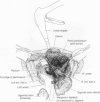Abstract
OBJECTIVE: New surgical procedures designed to assist in the treatment of peritoneal surface malignancy were sought. BACKGROUND: Decisions regarding the treatment of cancer depend on the anatomic location of the malignancy and the biologic aggressiveness of the disease. Some patients may have isolated intra-abdominal seeding of malignancy of limited extent or of low biologic grade. In the past, these clinical situations have been regarded as lethal. METHODS: The cytoreductive approach may require six peritonectomy procedures to resect or strip cancer from all intra-abdominal surfaces. RESULTS: These are greater omentectomy-splenectomy; left upper quadrant peritonectomy; right upper quadrant peritonectomy; lesser omentectomy-cholecystectomy with stripping of the omental bursa; pelvic peritonectomy with sleeve resection of the sigmoid colon; and antrectomy. CONCLUSIONS: Peritonectomy procedures and preparation of the abdomen for early postoperative intraperitoneal chemotherapy were described. The author has used the cytoreductive approach to achieve long-term, disease-free survival in selected patients with peritoneal carcinomatosis, peritoneal sarcomatosis or mesothelioma.
Full text
PDF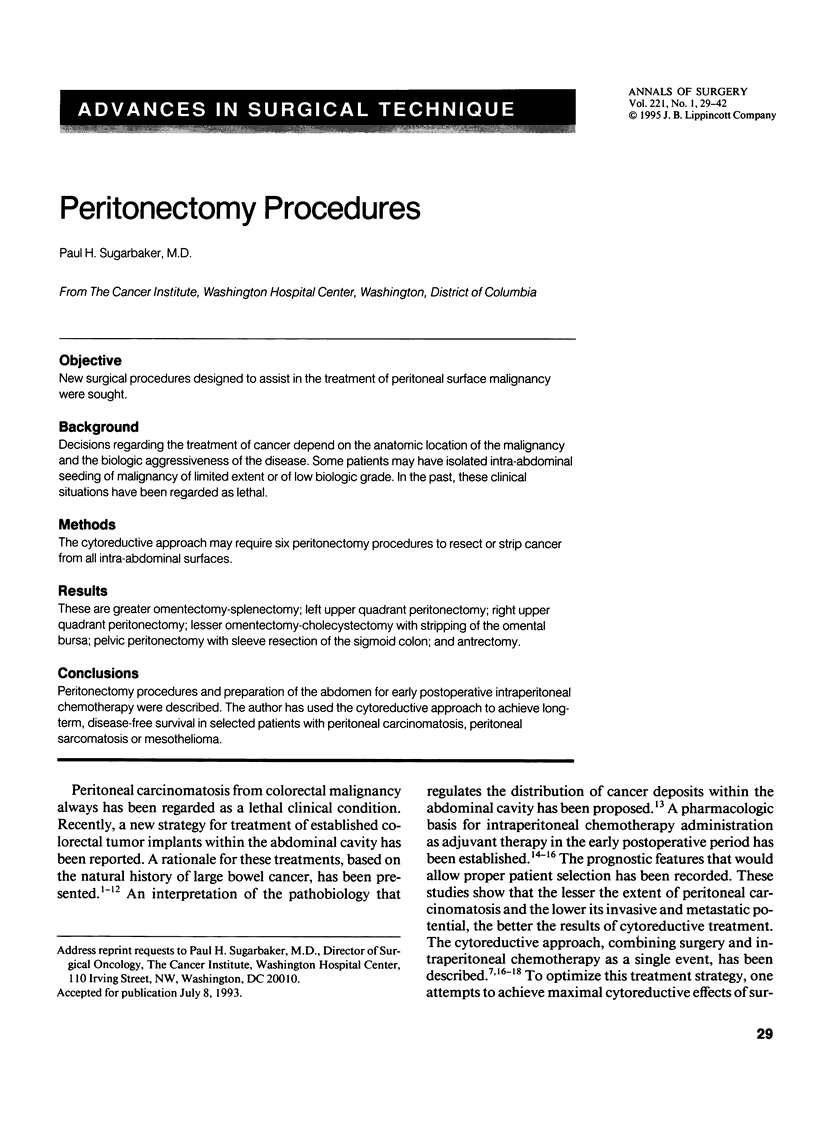
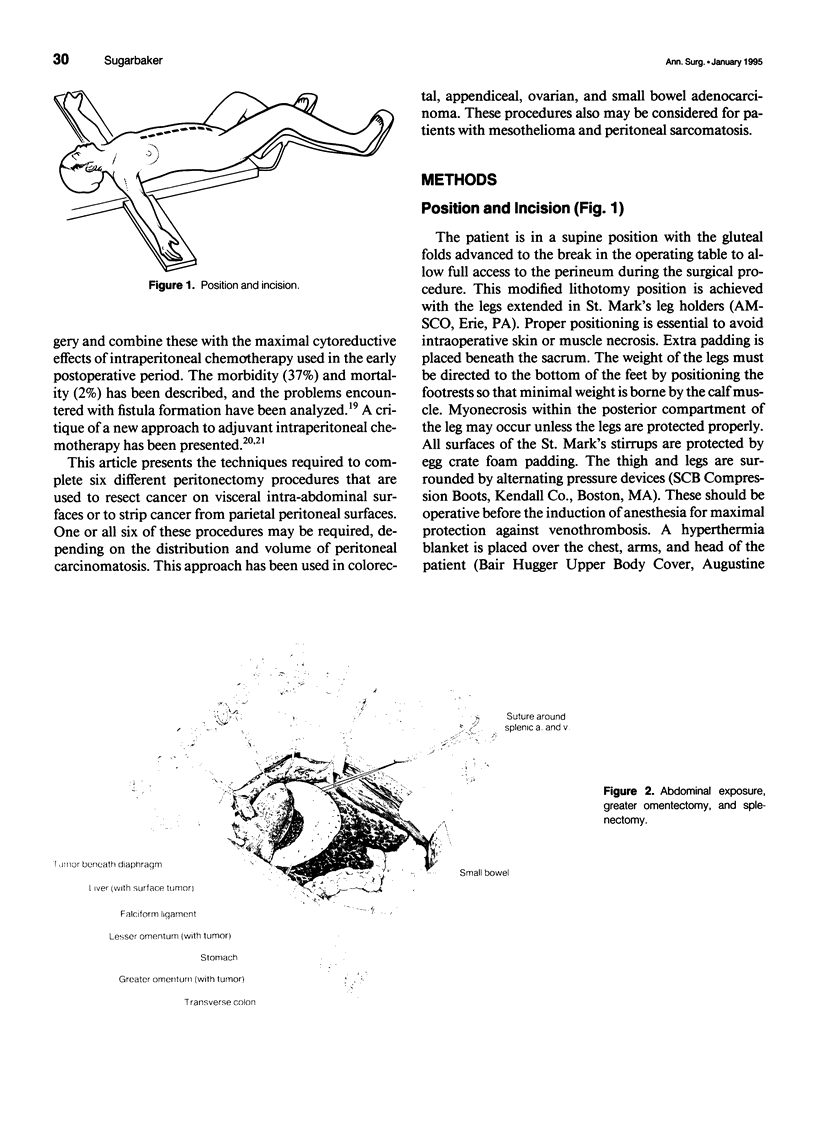
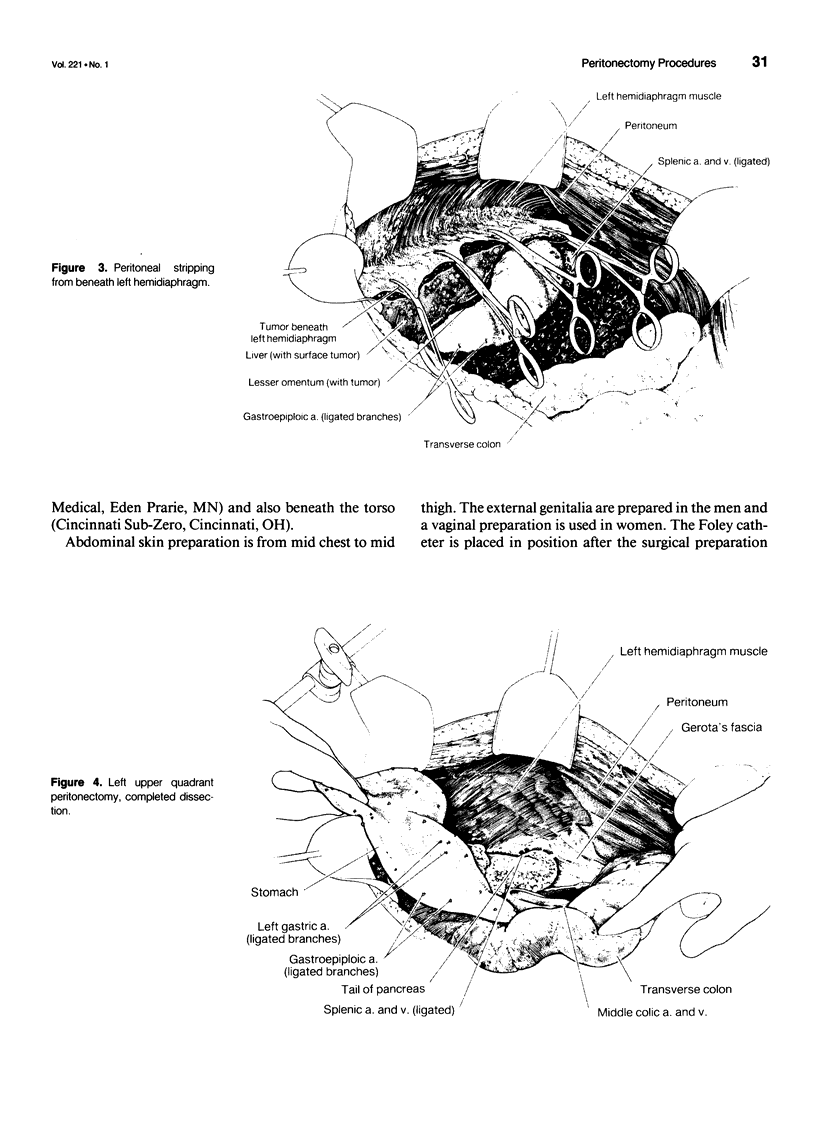
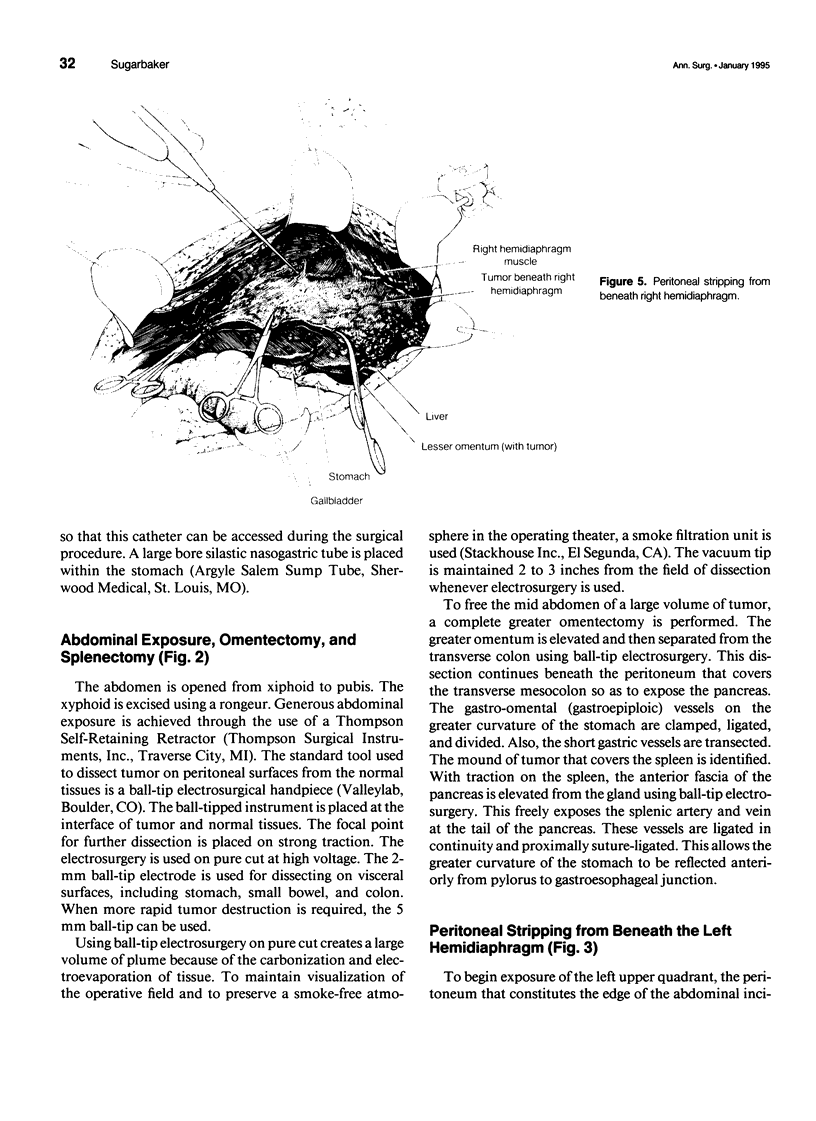
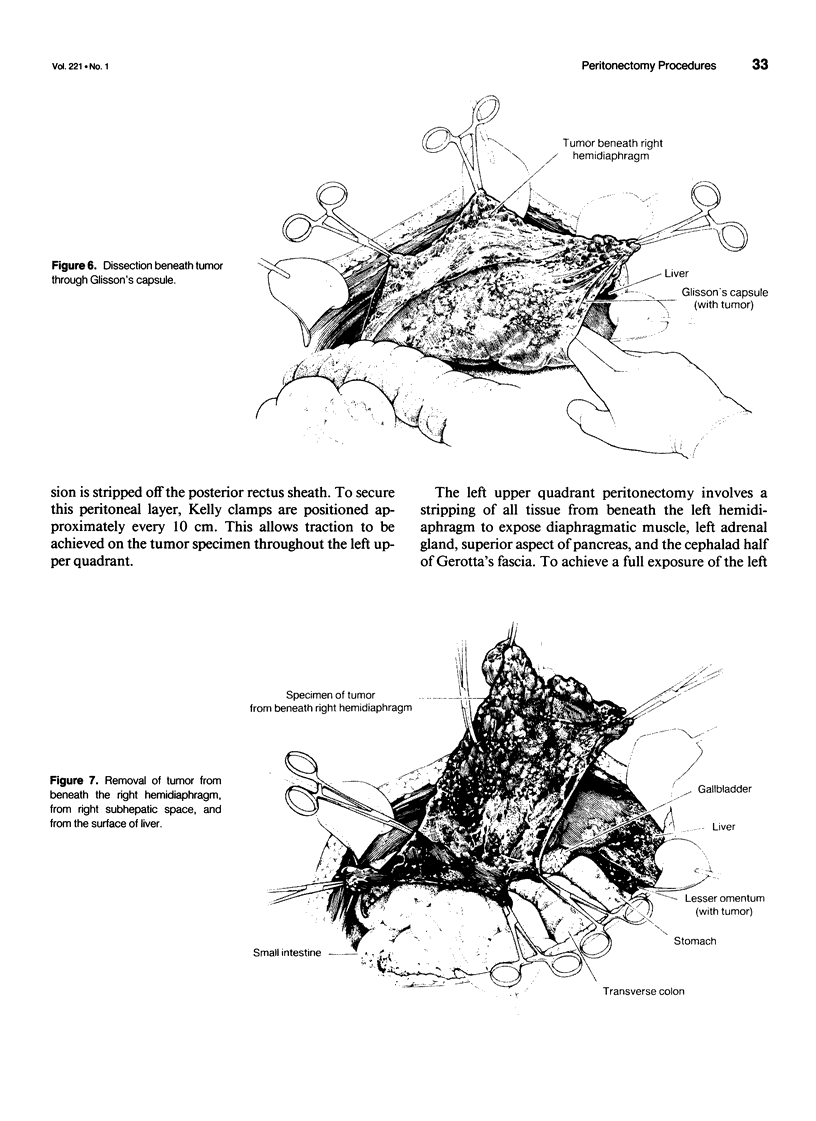
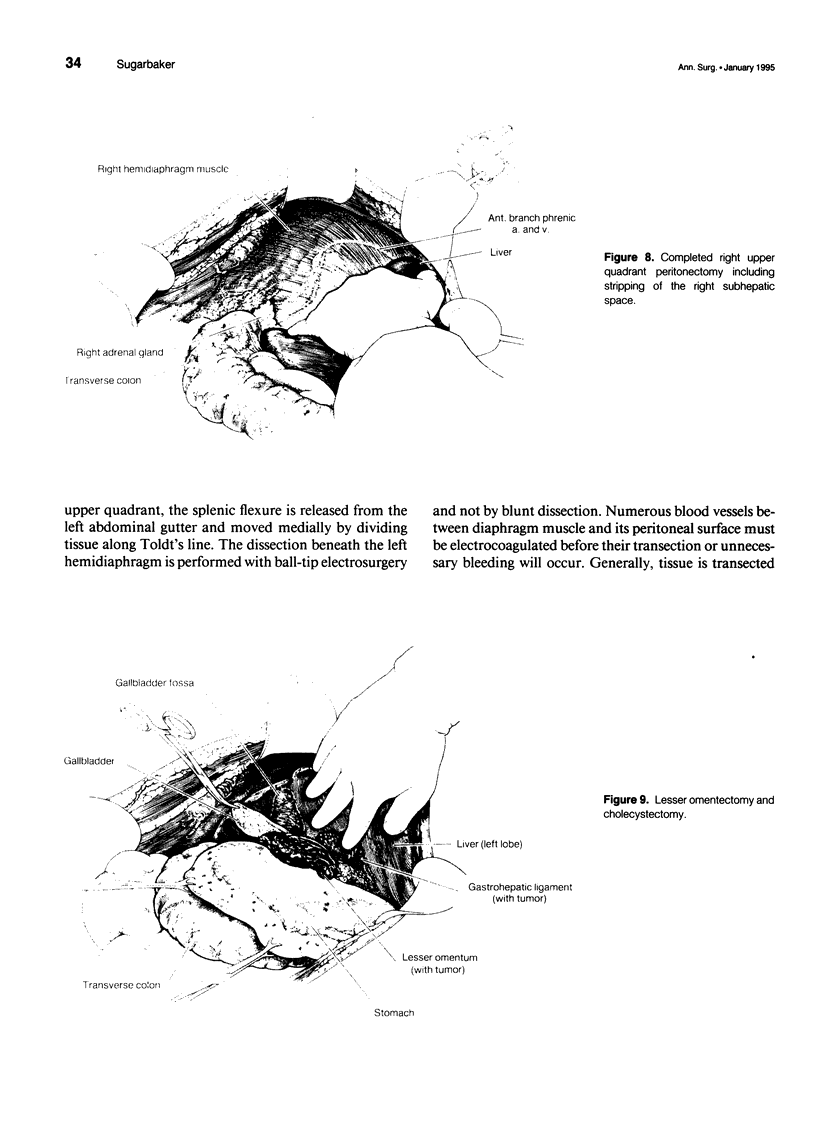
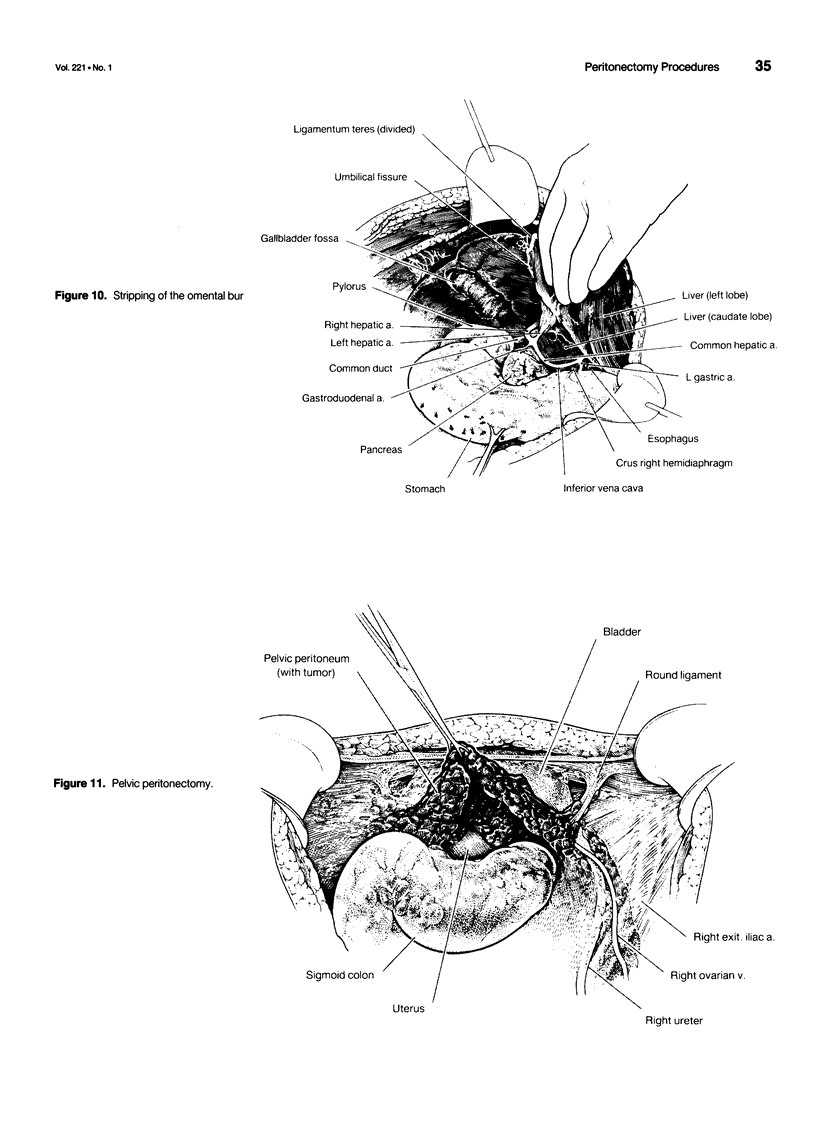
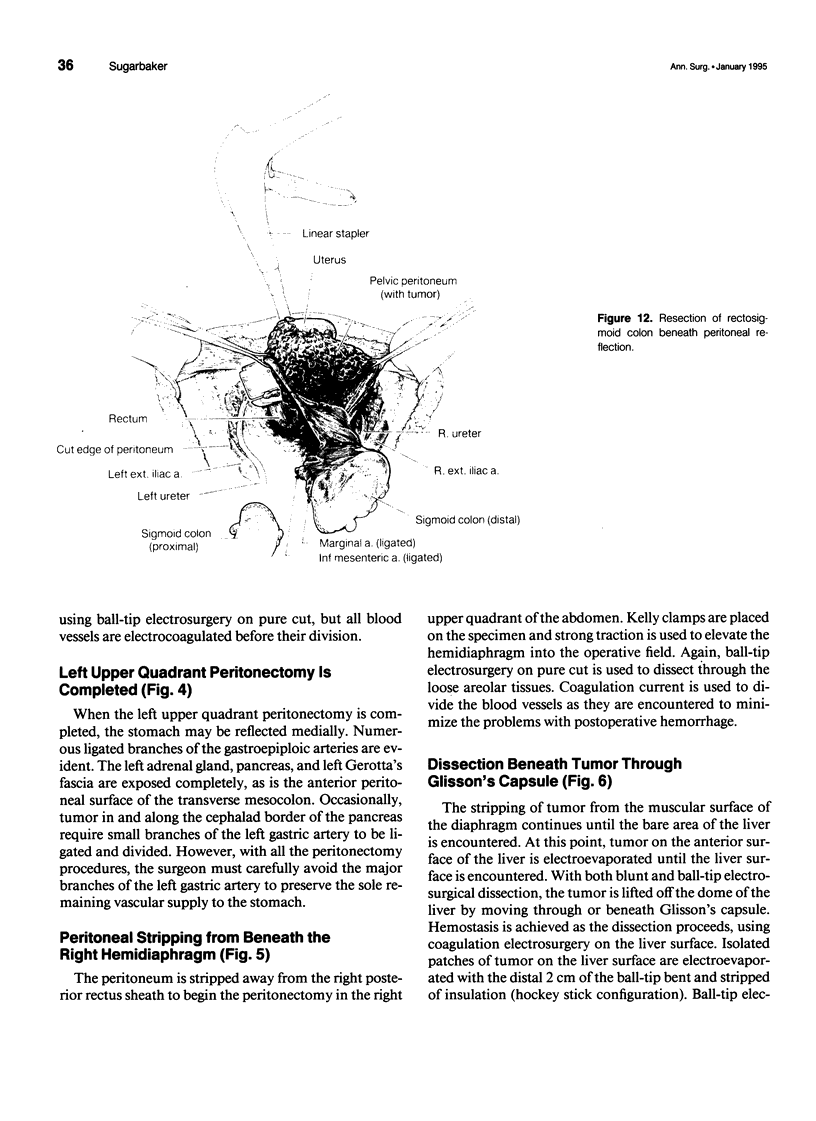
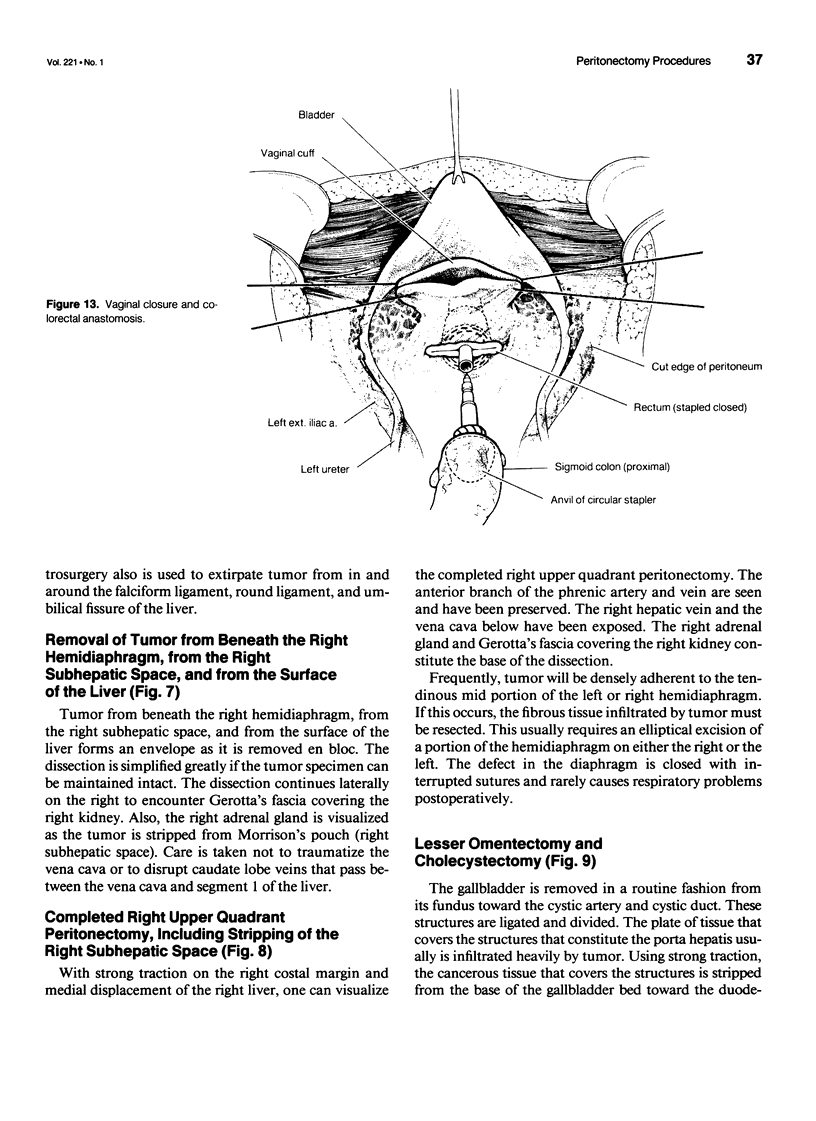
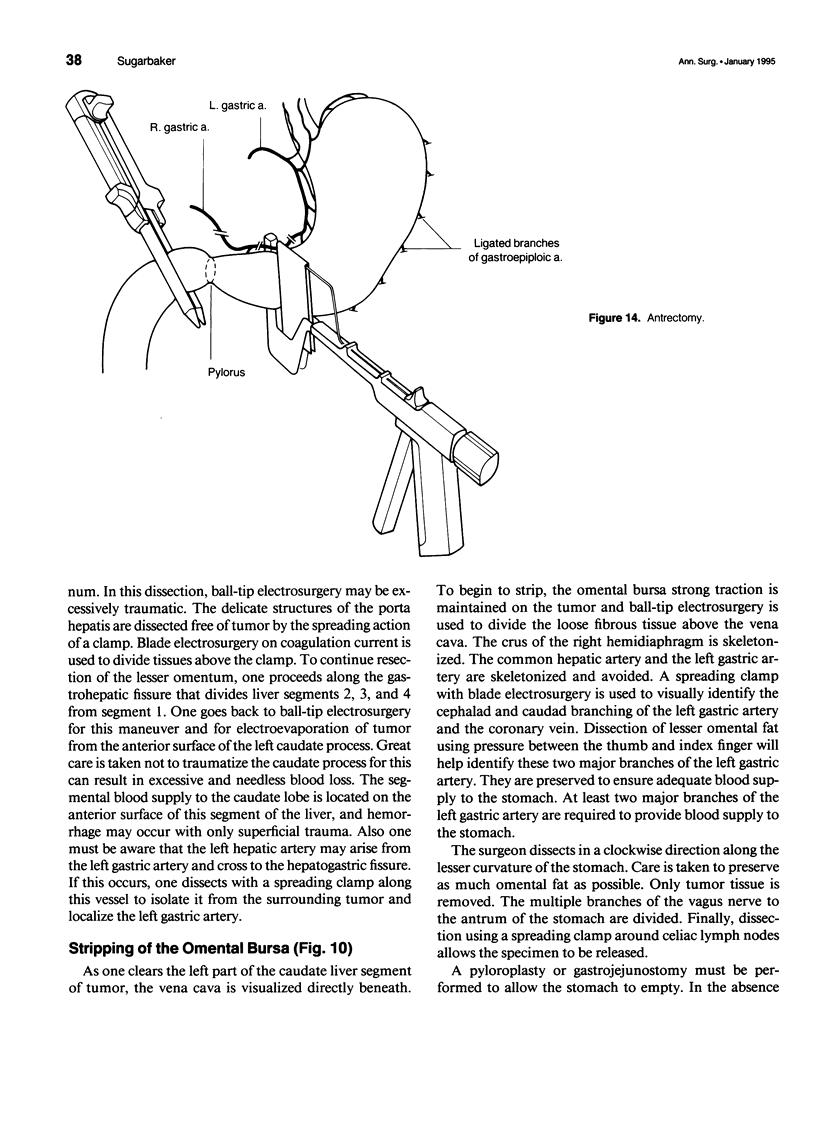
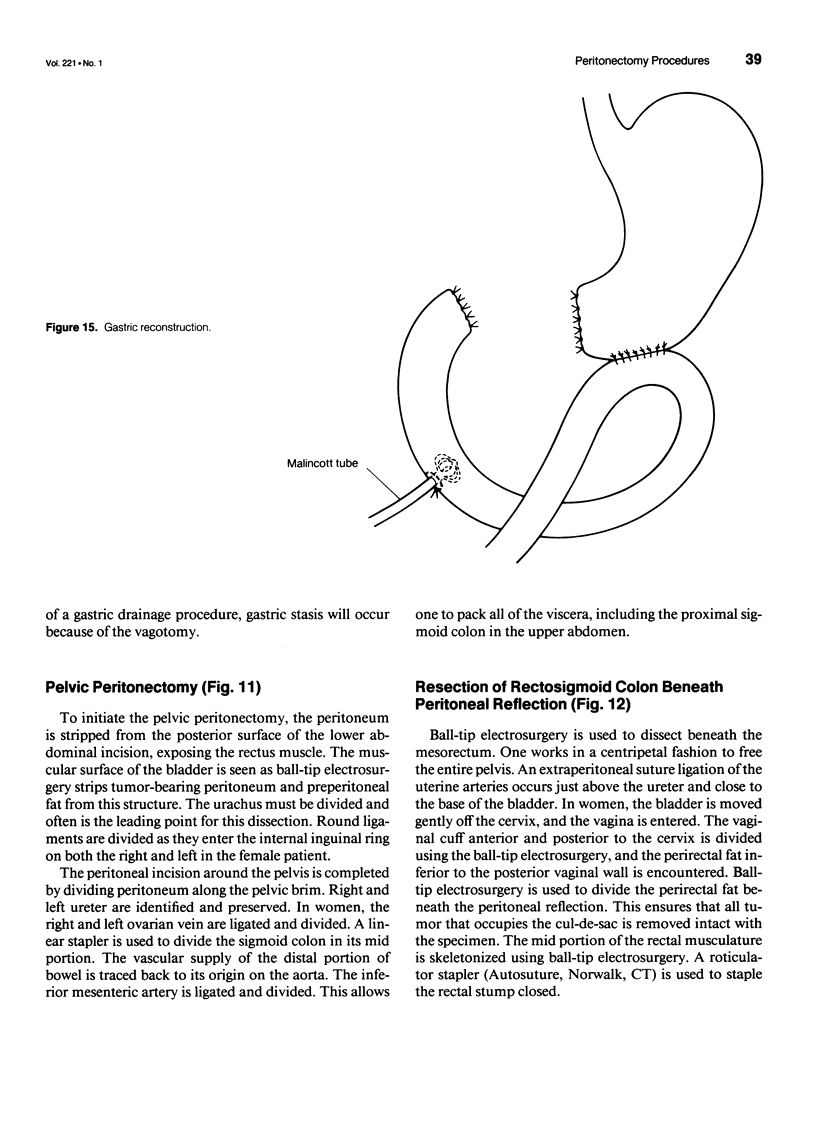
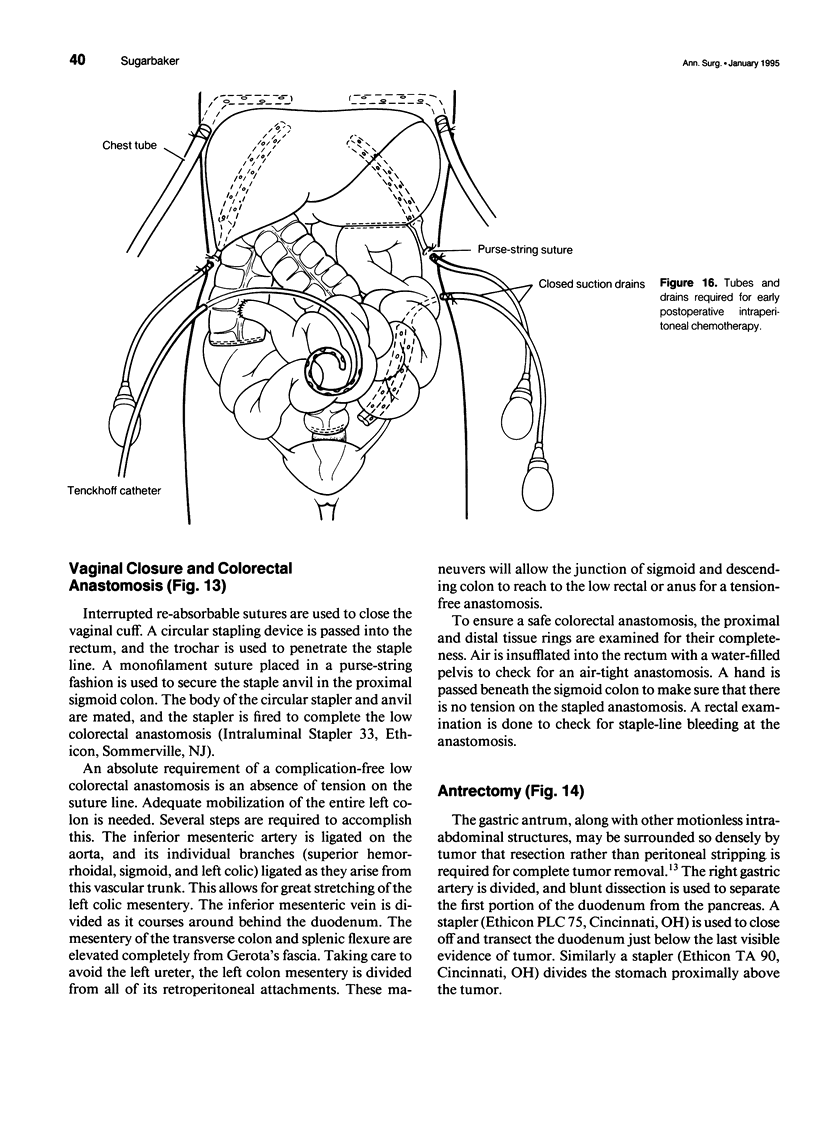
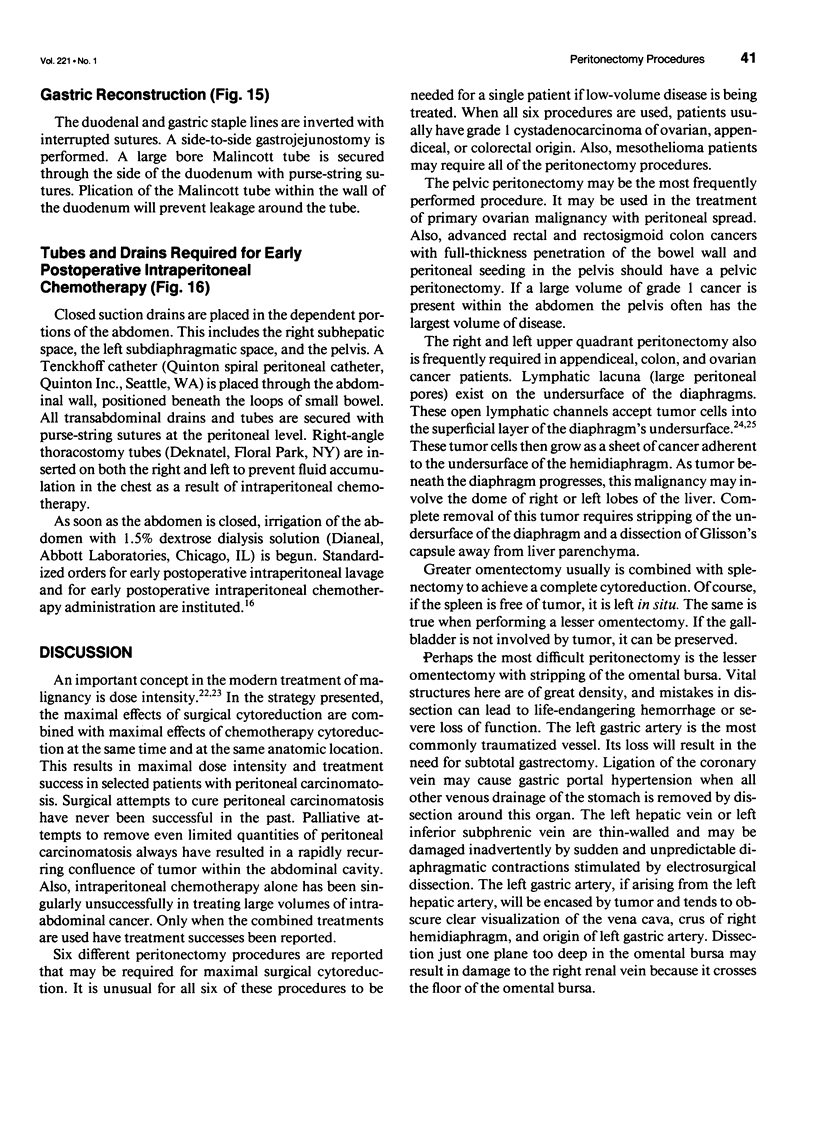
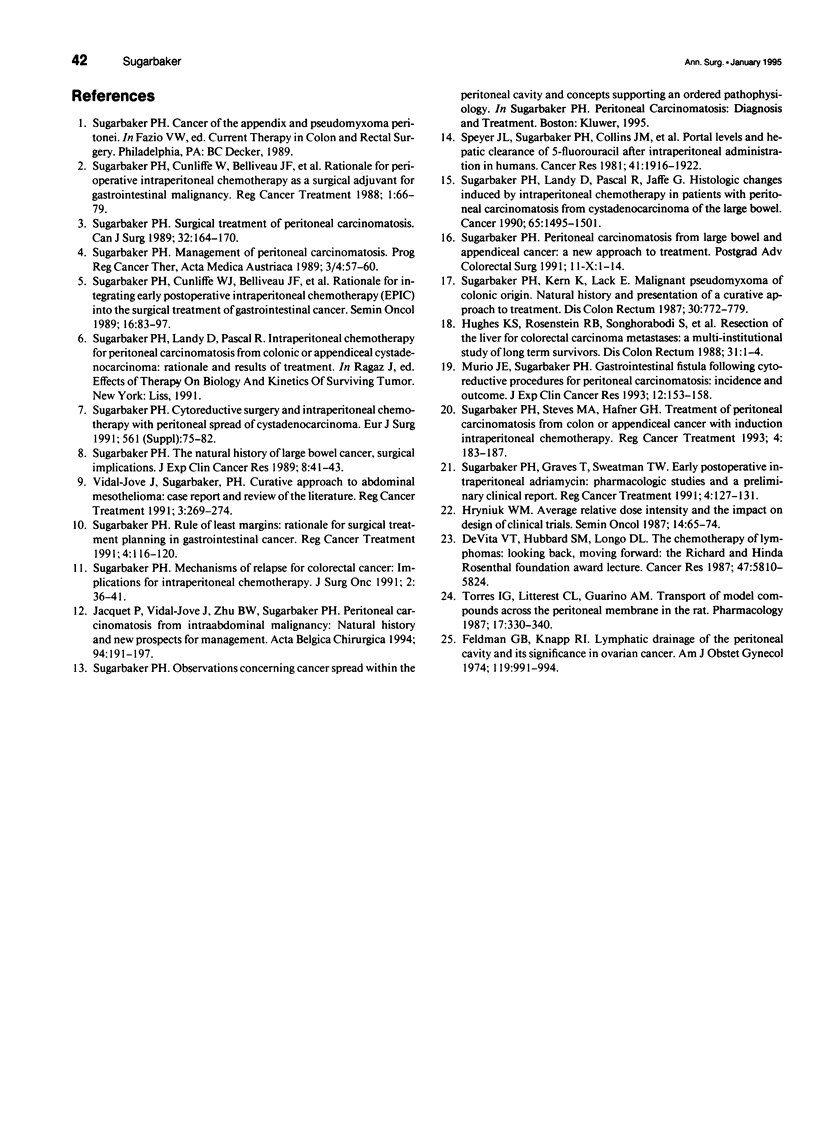
Images in this article
Selected References
These references are in PubMed. This may not be the complete list of references from this article.
- De Vita V. T., Jr, Hubbard S. M., Longo D. L. The chemotherapy of lymphomas: looking back, moving forward--the Richard and Hinda Rosenthal Foundation award lecture. Cancer Res. 1987 Nov 15;47(22):5810–5824. [PubMed] [Google Scholar]
- Feldman G. B., Knapp R. C. Lymphatic drainage of the peritoneal cavity and its significance in ovarian cancer. Am J Obstet Gynecol. 1974 Aug 1;119(7):991–994. doi: 10.1016/0002-9378(74)90021-0. [DOI] [PubMed] [Google Scholar]
- Hryniuk W. M. Average relative dose intensity and the impact on design of clinical trials. Semin Oncol. 1987 Mar;14(1):65–74. [PubMed] [Google Scholar]
- Hughes K. S., Rosenstein R. B., Songhorabodi S., Adson M. A., Ilstrup D. M., Fortner J. G., Maclean B. J., Foster J. H., Daly J. M., Fitzherbert D. Resection of the liver for colorectal carcinoma metastases. A multi-institutional study of long-term survivors. Dis Colon Rectum. 1988 Jan;31(1):1–4. doi: 10.1007/bf02552560. [DOI] [PMC free article] [PubMed] [Google Scholar]
- Jacquet P., Vidal-Jove J., Zhu B., Sugarbaker P. Peritoneal carcinomatosis from gastrointestinal malignancy: natural history and new prospects for management. Acta Chir Belg. 1994 Jul-Aug;94(4):191–197. [PubMed] [Google Scholar]
- Speyer J. L., Sugarbaker P. H., Collins J. M., Dedrick R. L., Klecker R. W., Jr, Myers C. E. Portal levels and hepatic clearance of 5-fluorouracil after intraperitoneal administration in humans. Cancer Res. 1981 May;41(5):1916–1922. [PubMed] [Google Scholar]
- Sugarbaker P. H., Cunliffe W. J., Belliveau J., de Bruijn E. A., Graves T., Mullins R. E., Schlag P. Rationale for integrating early postoperative intraperitoneal chemotherapy into the surgical treatment of gastrointestinal cancer. Semin Oncol. 1989 Aug;16(4 Suppl 6):83–97. [PubMed] [Google Scholar]
- Sugarbaker P. H. Cytoreductive surgery and intraperitoneal chemotherapy with peritoneal spread of cystadenocarcinoma. Eur J Surg Suppl. 1991 May;(561):75–82. [PubMed] [Google Scholar]
- Sugarbaker P. H., Kern K., Lack E. Malignant pseudomyxoma peritonei of colonic origin. Natural history and presentation of a curative approach to treatment. Dis Colon Rectum. 1987 Oct;30(10):772–779. doi: 10.1007/BF02554625. [DOI] [PubMed] [Google Scholar]
- Sugarbaker P. H., Landy D., Jaffe G., Pascal R. Histologic changes induced by intraperitoneal chemotherapy with 5-fluorouracil and mitomycin C in patients with peritoneal carcinomatosis from cystadenocarcinoma of the colon or appendix. Cancer. 1990 Apr 1;65(7):1495–1501. doi: 10.1002/1097-0142(19900401)65:7<1495::aid-cncr2820650708>3.0.co;2-1. [DOI] [PubMed] [Google Scholar]
- Sugarbaker P. H. Management of peritoneal carcinomatosis. Acta Med Austriaca. 1989;16(3-4):57–60. [PubMed] [Google Scholar]
- Sugarbaker P. H. Mechanisms of relapse for colorectal cancer: implications for intraperitoneal chemotherapy. J Surg Oncol Suppl. 1991;2:36–41. doi: 10.1002/jso.2930480510. [DOI] [PubMed] [Google Scholar]
- Sugarbaker P. H. Surgical treatment of peritoneal carcinomatosis: 1988 Du Pont lecture. Can J Surg. 1989 May;32(3):164–170. [PubMed] [Google Scholar]
- Torres I. J., Litterst C. L., Guarino A. M. Transport of model compounds across the peritoneal membrane in the rat. Pharmacology. 1978;17(6):330–340. doi: 10.1159/000136874. [DOI] [PubMed] [Google Scholar]













